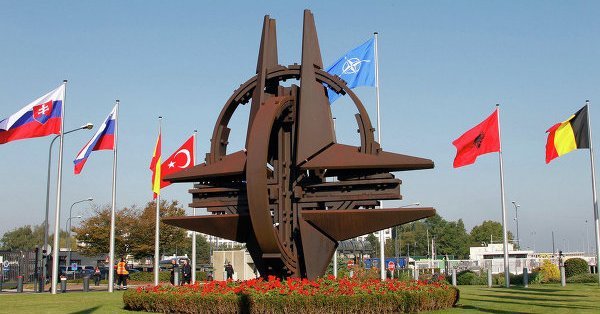Grasping political and security turbulences down the road
Most defence budgets of European Member States are in relative decline, and within NATO only four members (United States, United Kingdom, Greece and Estonia) managed to attain this benchmark percentage. Tragically, just before the recent Wales Summit the governments of Germany and Canada indicated they would not pledge to increase their defence spending targets. Nonetheless, the ‘invitation’ for NATO members to beef up efforts to push towards the 2% [of their GDP to spend on defence] was still on the Wales agenda on 4th and 5th September.
The “Smart Defence” concept along with forward-looking guidelines involving the “Readiness Action Plan” and programs such as the “Connected Forces Initiative” and “NATO Strategic Airlift Capability” will be essential to equip the Alliance with the means and operational dexterity to engage in future and emerging security challenges. Right now, Europe needs decisive leadership, financial stability, economic revival and an effective course to building up a collective defence capability that rises above current contributions and investments. The EU and NATO need each other in the face of an asserting reality of issues: the Islamic State (aka ISIL / ISIS) decisive expansion (along with their mounting record of crimes against humanity) in Syria and Iraq, the internal consolidation of Ukraine vis-à-vis Russian interventionism, the Ebola virus threat, climate change and more.
Russia tarnishing geopolitical borders: a challenge to NATO and the EU
For long, the Russian geopolitical mindset is clashing with the way the Alliance is moving forward. One particular item of importance needs further elaboration: we must distinguish the concept of a permanent presence of NATO troops in Eastern Europe versus the principle of ‘access’ to Eastern Europe for the purpose of transiting troops swiftly to areas where NATO members’ vital security interests are endangered, as foreseen in the Article 5 commitment.
A common misunderstanding is that the permanent stationing of NATO forces towards the Eastern borders of Europe would be a violation of the NATO-Russia Founding Act on Mutual Relations rules laid down in 1997. The text states clearly that the provision on non-prepositioning would be void if a new threat appeared. Russia’s actions in Ukraine constitute for such a changing of conditionality, meaning the premise in the Act is hereby abrogated and NATO is legally able to move and position its forces between and throughout nations which were once part of the former East Bloc (Warsaw Pact).
Some form of criticism is in due order: when Secretary-General Rasmussen confirmed that Georgia and Ukraine were given the opportunity to join in NATO, this was the most impact-giving wake-up call for the geostrategic advisors in the Kremlin. The mention in 2012 that Georgia was conceived as “a model partner” for NATO and the October 2013 pledge for planned integration of Georgian into the NATO Response Force by 2015 has incensed the Kremlin. Further dialogue with Russia must focus on the right of sovereign nations to join NATO under their free will, but we shouldn’t ignore Russia’s own strategic concerns! Regarding Ukraine, the NATO Atlantic Council, the Political and Partnerships Committee and related bodies are well aware that further yet non-conditioned military assistance will be of Ukraine’s interest, but not NATO mobilization of troops or strike capabilities. Keeping communication channels well open with the Russians and taking slow steps will be vital to avoid a rise of tensions, military buildup and repositioning of tactical weapons (nuclear !?) along Ukraine’s fringes.
NATO enlargement: forestalled or adjusted?
The key question: why is it relevant for NATO to embrace – and according to a score of analysts and commentators – expand into Eastern Europe still?
Truth of the matter is: others may benefit from a destabilized, abandoned and unresponsive South-Eastern Europe and Asia Minor. In a context of relative lawlessness (or lax upholding of the law), high pay-off levels for corruption, crimes and trafficking, a coordinated response to come to a “Europe whole and free” should move forward. While the expected integration of Montenegro into NATO should pose no critical problems pending fulfilment of the stringent accession criteria, the accession of the Republic of Macedonia will depend on the readiness of the Greek government and government in Skopje to embrace reality and understand that the safety and further economic and political consolidation of the entire South-Eastern European flank must be revved up – in spite of national concerns and age-old sensitivities about the official nomenclature of Greece’s northern neighbour.
However, Georgia and Ukraine are momentarily chapters that best remain out of NATO’s future membership purview. The Kremlin had noted that NATO expansion was reaching critical red lines, and NATO’s opposing rhetoric and positioning prompted a nation which still thinks and acts in 20th Century ‘neorealist’ terms, weary of the ghosts of post-1991 defeat (loss of the former Warsaw Pact buffer of states) to take limited but decisive action to keep their strategic interests shielded from Western meddling.
NATO needs to assure it can intervene in events that may not be falling under Article 5 conditions yet affect the security of nations which are at least on a path to democratization and embracing the core set of norms and values (collective defence, peace-seeking, rule of law, guarantees for personal liberties, etc.) of transatlantic democracies. This is why Julian Lindley-French (Institute of Statecraft, renowned analyst on European and transatlantic security) argues for a “radical approach” in the face of a “widening gap between NATO military capability and capacity” to act and intervene. The future may well prove to be, as Lindley-French says, “hyper-competitive” and the way that NATO balances out projection with protection will be key for its enduring success.
NATO should not move to revise (such as simplify) its accession standards to NATO membership – but the Alliance must indeed address the dynamics of strategic reality. While hard to swallow, the loss of the Crimea to Russia (despite the contested and illegal people’s referendum) and partial ‘galvanization’ of the Russian influence sphere into Eastern Ukraine must be seen against deeply rooted and withheld historical ties.
Interpreting past failures: A learning curve for strong yet adaptive strategies
NATO’s major failure consists in misreading and poorly anticipating on unfolding events that affect the security of its 28 members and strategic partners nearby and afar. This means an urgent and tighter integration of state-of-the-art collective Early Warning capability (through on-the-ground intelligence gathering, along with close surveillance of movements and telecommunications in insurgent and paramilitary forces). Hugh Segal (chair of the NATO Council in Canada, former Chief of Staff to the Canadian PM) rightfully points out in NATO: Securing Our World (ATA) that NATO’s impact is too often gravely curtailed because of scarcely acquired, derivative intelligence and limited deployability within the Member States: “Instead, the Alliance must have an enhanced apprehensive intelligence and deployability capacity resident in its own operations and planning headquarters.”
So as Russia has drawn a line in the sand, so must we stick to defend the Euro-Atlantic interests in the Eastern Mediterranean, as well as the Scandinavian and Baltic States where Russia keeps pushing the Euro-Atlantic partnership’s ‘soft ribs’. This will remain a litmus test for NATO since - as this author came to learn recently from credible military strategists – Russia will proceed in foreseeable time to put the Alliance’s strength over its Article 5 commitments to the test. With weakened defence budgets, spurious lagging in military modernization, and widespread political unwillingness to operationalize the NATO Response Force of 60.000 troops as well as the European Battlegroups (foreseen under the Helsinki Headline Goal 2010), Russia finds the Euro-Atlantic Alliance in a tight spot.
The July 2014 commitment voiced by the Prime Ministers of the Czech Republic, Hungary, Poland and Slovakia to turn one EU Battlegroup into a capable, permanent ‘V4’ Rapid Reaction Force is very encouraging and shows a sense for strategic realism that other EU Member States seem to lack at this moment. This V4 EU Battlegroup will be on stand-by mode as of the first half of 2016. It’s a positive evolution, but hardly sufficient to action a credible deterrent force within the whole of Europe.
A ‘transatlantic’ duty to match CSDP policy with viable hard power
The ‘mission impossible’ will be to prevent the Russian government from supporting the separatist insurgents in the Donetsk and Luhansk provinces with arms, logistical and technological means that could enable them to defend successfully against the Ukrainian army and air force. Considering the relative distrust of Russia for EU or NATO involvement, the OSCE is tasked with normalizing the situation before forestallments and mounting military capabilities at the separatists’ side will make their occupation since April entirely irreversible. Almost six months since the occupation of Eastern Ukraine, the Ukrainian army needs advanced materials and strike superiority to regain control and behead the insurgents’ leadership.
Consolidation of political power and economic bolstering shall be instrumental for Ukraine to reinstate control, law and order in the Donbask. At the same time the international community must challenge the separatist leadership. The efforts of Ambassador Ertugrul Apakan, Chief Monitor of the OSCE Special Monitoring Mission to Ukraine, must be teamed up with a broad support base by the international community in favour of unification, and work out the sovereignty question. The federation agreement cannot be abandoned as a viable solution in this relatively early stage of the negotiations and the risk of spill-over through copy-pasting Russia’s military opportunism by other parties venturing into armed interventions may arise. In this respect it’s useful to quote Mr. Philip N. Remler (former Head of OSCE Mission to Moldova) who spoke at the end of March 2014 in a discussion panel at the Diplomatic Academy in Vienna:
““The treats are serious and obvious. Today Russia has invoked this doctrine [to intervene and dismember states or change state borders] to justify a military intervention in Ukraine, again without exhausting diplomatic and institutional means to resolve the issues. But what happens if Russia invokes the same doctrine tomorrow with respect to the Baltics? […] And if Russia is invoking this doctrine today, who will then invoke it tomorrow?””
I firmly believe that we, as federalists, must take note of this staunch warning, defend the legally established boundaries of our Eastern members and avoid making the mistake not to match our determination to commit to Europe’s common security and defence - both within NATO and the EU - with convincing and capable hard power measures and means.


Follow the comments: |
|
